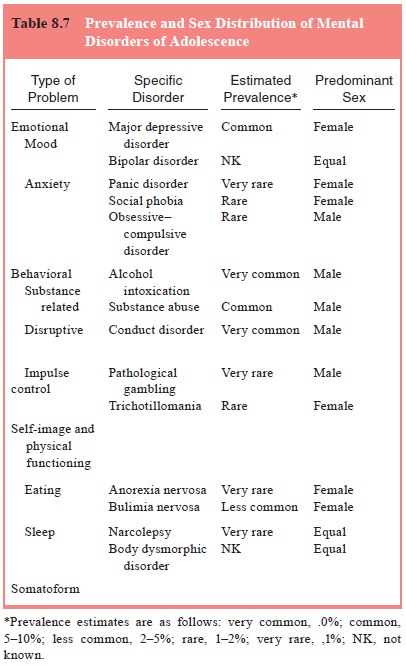Chapter: Essentials of Psychiatry: Psychopathology Across the Life-Cycle
Problems of Adolescence
Problems of Adolescence
Adolescence is the period of life between puberty
and age 19 years. For the great majority of children, the physiological events
of puberty signify the end of childhood. Achievement of financial independence
from the family of origin through work and formation of love relationships
outside the family usually signify the end of adolescence and the beginning of
adulthood. In the modern world, these goals may not be attained until the early
or middle twenties or later. There are many important developmental phases in
adolescence. Although moody, confused and rebellious “adolescent turmoil” is no
longer considered the norm for young people, some emotional troubles are fairly
common. These may turn out to be symptomatic of nothing more than the stresses
and strains of normal development, or they may be the early signs of
significant psychological disturbance.
Types of Problems
Common problems of adolescence are listed in Table
8.5. Rarely, schizophrenia may have a late adolescent onset. As might be
ex-pected, comorbidity is common among disorders of adolescence. Table 8.6
summarizes these patterns.


Problems in Self-image and Physical Functioning
Disturbances in body image and eating behavior have
peak ages at onset during adolescence and early adulthood. Persistence of
disturbed eating behaviors into early adulthood is often accompanied by the
development of personality disorders in many cases. Bulimia nervosa has been
shown to be associated with borderline personality disorder in contrast with
anorexia nervosa, which was found to be associated with avoidant personality
disorder (Skodol et al., 1993).
Although adolescents tend to sleep late, excessive
daytime sleepiness may become a problem during adolescence. Excessive
sleepiness may indicate the onset of narcolepsy, a rare disorder characterized
by sleep attacks, accompanied by cataplexy (sudden, bilateral loss of muscle
tone), and/or hypnopompic or hypnogogic hallucinations or sleep paralysis
(Regestein, 1994).

A preoccupation with an imagined or exaggerated
defect in appearance may develop in adolescence. Unlike the normal concerns of
adolescents with their physical appearances, excessively time-consuming
concerns that cause great distress or interfere with functioning suggest body
dysmorphic disorder.
Table 8.7 summarizes the estimated prevalence and
sex distribution of DSM-IV mental disorders commonly seen in adolescents.
Related Topics